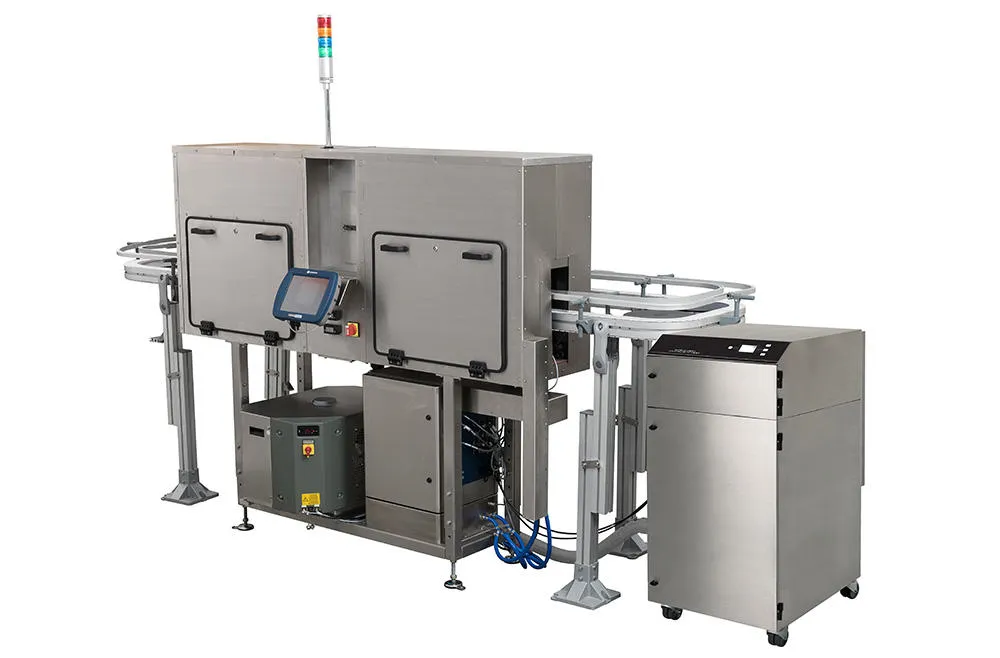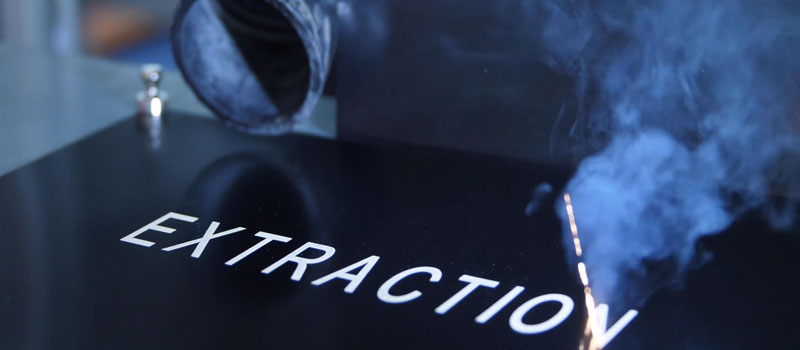Scribing lasers are used across multiple industries to apply traceability and production data to products and packaging. Using a laser in these applications results in durable, highly resistant and well readable codes.
While the safety of equipment installation should always be paramount, using a CO2, fibre or UV laser technology for coding implies specific safety measures.
Are you aware of them? Let us talk you through:
Why use a laser system for coding?
You have several options when looking for a way to add traceability data, like printing with inkjet printers or applying labels. Laser coding has some significant advantages:
- It is fast enough to keep up with production line speeds.
- The high printing quality enables to add text, figures, symbols or other shapes to a product or package to satisfy global manufacturers' compliance, traceability, and productivity requirements.
- No need for fluids or labels
- Laser marking is permanent
Why does laser safety matter?
The lasering process works with light energy, which is guided and bundled by optics. The resulting laser beam changes the surface of a material and engraves the marking. Contrary to ink based coding technologies, nothing is applied to the product; instead, particles from the substrate are removed, leaving an indelible, permanent marking.
Anyone who has ever watched a science fiction film knows about the destructive power of lasers. And while these weapons are sci-fi, it is true that when a laser beam hits a material, it heats it to the point of burning, vaporising or melting.
When using a laser for coding a product, the energy is intentionally guided to remove particles from the surface of a material or cause a thermo-chemical reaction. You can easily imagine what would happen if the laser beam were misguided. So for the wellbeing of the employees in the vicinity and the safety of operations, laser safety is paramount. A good safety policy will also prolong the lifespan of your equipment, prevent downtime, and increase your operational efficiency.
Considerations need to include laser guarding, a proper installation, prevention of access in operation, and extraction systems to remove particles that can damage equipment and reduce code quality. Accident prevention and the correct understanding of handling the laser create a safe working environment and make your team feel safe working with the lasers.
To ensure safety measures are applied, regional regulations for laser safety standards are enforced (e.g. CFR and ANSI in USA and widely adopted globally, IEC 60825 in Europe).
What are laser classes?
According to current international standards, lasers are divided into 4 laser classes based on their danger to the human body. The laser class can be determined by considering multiple factors, such as power or wavelength. Assigning a laser to a laser class provides information about the possible hazards and indicates which protective measures are needed to ensure safe operation. A higher laser classification indicates a higher potential hazard. This means, if a laser is class 1, the accessible laser radiation is not dangerous under reasonably foreseeable conditions. While the accessible laser radiation of a class 4 laser is hazardous for the eye and dangerous to the skin. So all safety measures aim at achieving a low (best case class 1) rating of the laser installation to ensure safe operation in production environments.
It is first necessary to say that every laser used in production causes a potential hazard. UV, CO2 and fibre lasers are all classified class 4 prior to safety measures. In order to use these lasers safely in a production environment, appropriate measures must be taken. There are standards that prescribe certain safety features to limit the hazards of a class 4 laser to the point where it can be classified as a class 1 laser.
Domino has experts at hand who can help understand the measures needed to establish a safe production environment and provides the appropriate solutions. We advocate that all laser users should know and understand the class of the laser they are operating.

Domino takes safety seriously
Housing:
When installing lasers on a production line, it needs to be ensured that no one can get directly into the laser beam or is affected by scattered radiation. To ensure this, every laser device should be properly shielded by a sealed housing that prevents accidental contact.
As you would expect, appropriate guarding is based on the power of the laser you are working with (defined with the laser class) and on the wavelength of the laser beam. So, material selection depends on the laser class and whether it is a CO2, fibre or UV laser.
Also important to consider is the orientation of your guarding and its distance from the laser. It's crucial to prevent the beam from reflecting directly back onto the laser, as this would damage your equipment.

Access Prevention:
In addition to the housing, in order to establish security, an access prevention must be installed to ensure secure access to the laser installation. Domino uses interlock switches, to do this.
Interlock switches need to be wired into the laser control circuit to disable the laser when the housing is opened to prevent access to the laser lens and marking area when the laser is in operation. It ensures that the laser switches off automatically as soon as the shield is opened.
When the shield or housing closes again, the laser can only be switched back on manually by the operator.
Extraction:
Whenever a laser is used to code onto a product, it burns away material from the surface or changes the surface of the substrate that is being printed on. Manufacturers should be aware of fumes and particles that result from the laser coding process. Logically, substances are released in the process that end up in the air and production area.
That is why we offer optional fume extraction with all Domino lasers.
The dust remains in a filter bag, and the activated carbon in the main filter absorbs odour particles. This procedure keeps your products and production equipment clean, reducing hazards and maintenance requirements and contributing to a longer lifetime of equipment.

Safety Equipment:
Safety Goggles – The majority of injuries from laser radiation involve the eyes. Therefore we recommend wearing appropriate safety goggles when operating any laser that is not class 1. To effectively shield the eyes different goggles are needed for each laser technology.
Domino supplies the specific safety goggles for UV, fibre and CO2 lasers.
Safety Instructions:
Several warning signs, defined according to a standard, on the equipment and on the housing inform staff that there is a laser in the facility. Staff should be well informed of all warnings and possible actions to be taken.
Domino also strongly recommends that customers appoint a Laser Safety Officer (LSO) in accordance with European legislation. The LSO must understand the potential safety hazards of laser installation, safety classifications and the methods and precautions for reducing risk. They should oversee training for operators and complete regular safety inspections.
Stay safe with Domino Printing
Laser safety doesn't have to be complicated – but it is essential to get it right. To keep staff safe, avoid fines for breaching regulations, cut downtime, expand the lifespan of your equipment and run your coding operations as smoothly as possible.
Domino offers reliable lasers with worldwide service and support. But perhaps most importantly, we adhere to official safety standards and regulations. When regulation requires, customer-specific validation packs as part of Good Manufacturing Practice (GMP) product quality assurance are available for all laser systems.
Are you looking to add a laser to your production line or want to ensure you have a safe laser system in place?
Then contact our laser experts.